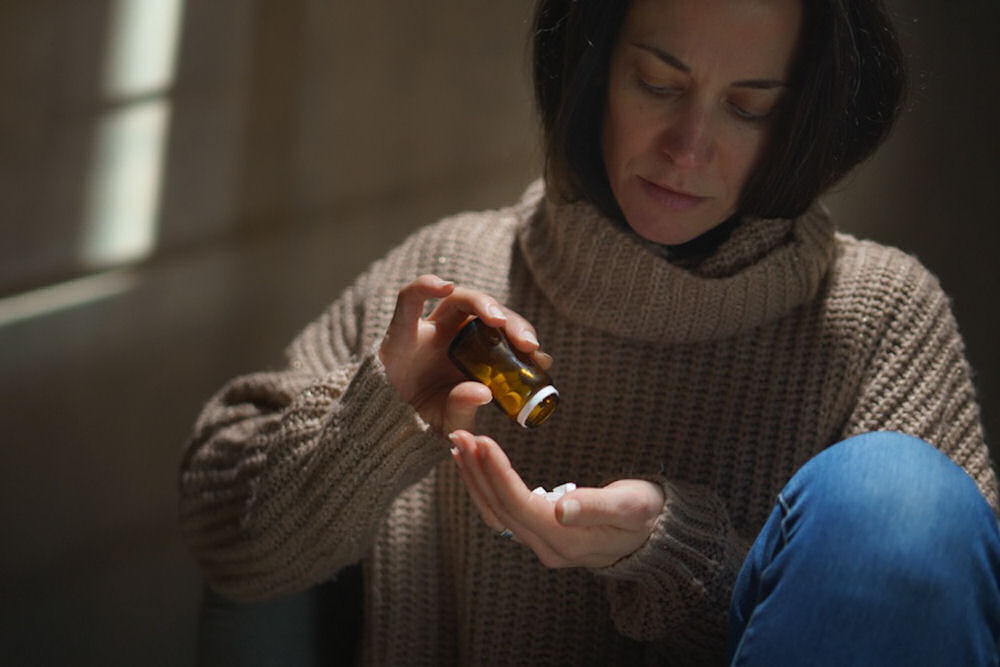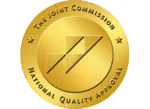When fighting substance use disorder, people think abstinence is the only way. But not everyone abusing drugs and alcohol wants to quit. People who are not ready to stop abusing drugs or alcohol can benefit from harm reduction techniques. For example, an individual with painkiller addiction would need to minimize the long-term effects.
How Does Harm Reduction Work?
Harm reduction is a set of practical ideas and strategies to help reduce the negative consequences associated with substance abuse. It’s also a movement for social justice built on the respect for and belief in the rights of people who use drugs and alcohol.
What Are the Principles of Harm Reduction?
Harm reduction uses a range of strategies, including safer use, managed use, abstinence, meeting people “where they’re at,” and addressing co-occurring disorders and substance abuse. There is no set definition or formula for implementing harm reduction since it is based on a person’s individual needs.
The National Harm Reduction Coalition considers these principles central to practicing harm reduction.
- Accepts, for better or worse, that licit and illicit drug use is part of our world and chooses to work to minimize its harmful effects rather than simply ignore or condemn them.
- Understands drug use as a complex, multi-faceted phenomenon that encompasses a continuum of behaviors from severe use to total abstinence and acknowledges that some ways of using drugs are safer than others.
- Establishes quality of life and well-being, not necessarily cessation of all drug use, as the criteria for successful interventions and policies.
- Calls for the non-judgmental, non-coercive provision of services and resources to people who use drugs and the communities in which they live to assist them in reducing attendant harm.
- Ensures that people who use drugs and those with a history of drug use routinely have a real voice in creating programs and policies designed to serve them.
- It affirms people who use drugs themselves as the primary agents of reducing the harms of their drug use and seeks to empower them to share information and support each other in strategies that meet their actual conditions of use.
- Recognizes that the realities of poverty, class, racism, social isolation, past trauma, sex-based discrimination, and other social inequities affect both people’s vulnerability to and capacity for effectively dealing with drug-related harm.
- It does not attempt to minimize or ignore the real and tragic harm and danger that can be associated with illicit drug use.
Harm reduction is crucial to keeping people who use drugs as healthy as possible and preventing overdose deaths.
What is Harm Reduction vs. Abstinence?

When it comes to treating drug and alcohol addiction, there are two main strategies – harm reduction and abstinence. While both methods have pros and cons, it is important to know the difference between harm reduction vs. abstinence.
Abstinence Approach to Substance Use
Abstinence-based addiction treatment believes a person must abstain from drug and alcohol use. This is based on the idea that a person cannot control their use, and it will lead to substance abuse. Some ideas that abstinence-based programs closely follow include:
- Substance abuse is a chronic disease
- Addiction is not curable but is manageable
- People with an addiction will use any mind-altering substance
- Therapy is crucial in recovery
- Holistic therapies such as yoga, meditation, and mindfulness are essential in addiction treatment
- 12-step programs are required to stay sober
- People should always be treated with respect and feel motivated
Harm Reduction Approach to Substance Abuse
Harm reduction vs. abstinence is entirely different. Harm reduction aims to reduce the negative consequences of substance abuse. Many people do not agree with harm reduction techniques, but knowing the main pillars of harm reduction can help you make the right choice.
The main pillars of harm reduction include:
- A harm reduction approach works to ease the negative consequences of substance use as opposed to stopping it completely
- The idea of harm reduction is people may be willing to practice moderation but not quit
- This approach works best when someone is willing to face the consequences and work around them
- Addiction treatment therapy is a crucial harm-reduction technique
- Harm reduction focuses on self-accountability and the consequences of substance use
There are many criticisms of harm reduction techniques. One is that people are allowed to keep using drugs or alcohol. This enabling of substance use can be dangerous since it is easy to overdose on drugs like heroin and fentanyl.
Why are Harm Reduction Services Crucial?
Currently, the U.S. has the most significant substance abuse and overdose epidemic ever. It is exacerbated by the Covid-19 pandemic and highly potent synthetic opioids. Fentanyl deaths have increased by 80 percent over the past two years.
Data from the Centers for Disease Control (CDC) shows the U.S. had over 100,000 overdose deaths from May 2020 to April 2021. This is an almost 29 percent increase from the same previous 12-month period.
Harm reduction techniques and services save lives by being available and accessible with an emphasis on humility and compassion for those using drugs. A harm reduction approach to substance abuse prevents drug-related deaths by offering access to healthcare, social services, and addiction treatments. Besides preventing overdose deaths, harm reduction approaches decrease acute life-threatening infections from unsterile needle use and diseases like HIV.
Harm Reduction and Continuum of Care in Recovery

Harm reduction is a comprehensive prevention strategy and part of the continuum of care. A harm reduction approach has the power to prevent deaths, injuries, diseases, overdoses, and substance abuse. Specifically, harm reduction services can help:
- Connect people to overdose prevention education and therapy, and give referrals for treatment of diseases and substance use disorders
- Distribute opioid overdose reversal medication such as naloxone
- Reduce the negative consequences of drug use and behaviors that lead to infectious diseases
- Reduce the transmission of infectious diseases through education and other resources
- Reduce overdose deaths
- Reduce the stigma associated with substance abuse and co-occurring disorders
- Promote hope and healing with the help of people in holistic drug rehab los angeles and other recovery support services
What are Harm Reduction Strategies for Alcoholism?

Many people can stop drinking alcohol when they have had enough. However, some people are unable to control their drinking. As a result, people may suffer the negative consequences of alcohol.
Harm-reduction alcohol strategies include:
- Alternating alcoholic drinks with non-alcoholic drinks
- Do not mix different types of alcohol
- Stick with drinks containing lower alcohol percentages
- Eat before and while you are drinking
- Always tell someone where you are going and when you will be home
- If you live alone, always check in with a friend to let them know you are home safe
- Arrange for a safe ride home before you start drinking
- Drink at your own pace. Do not try to keep up with everyone else or play drinking games
- Do not mix drugs or medications with alcohol
- Keep condoms with you to prevent unprotected sex while intoxicated
- Stay around people you trust
- If you start to feel sick, tell someone immediately
The more you drink, the less control you have over using these harm-reduction alcohol strategies.
What are Opioid Harm Reduction Techniques?
Heroin and other opioid harm reduction techniques help reduce the risk of overdose and decrease the transmission of blood-borne diseases associated with needle use. These techniques include referring people to addiction and medical treatments.
Several services and programs aid in opioid harm reduction, including:
- Injection sites or facilities that focus on preventing overdoses and reducing the contraction of infectious diseases through medical supervision during injectable drug use. These sites also provide education on safer injections, medical care and counseling, and treatment referrals. These sites do not provide or inject drugs.
- Needle exchange programs are community-based programs that supply free sterile needles and syringes. This opioid harm reduction approach reduces the risk of HIV and hepatitis.
- Medication-assisted therapy (MAT), such as methadone clinics, dispense prescription medications to help people overcome opioid addictions. MAT programs can lower opioid use, increase survival rates, improve the chances of finding and maintaining employment, reduce criminal activity, and improve treatment retention rates.
Medication Approach to Opioid Harm Reduction
Medications used in medication-assisted treatment for opioid harm reduction include:
- Methadone is the most common medication used to treat opioid addiction. It is a long-acting drug that alleviates cravings and withdrawal symptoms. While methadone is an effective opioid harm-reduction technique, it may cause unpleasant side effects and has a high risk of abuse and overdose.
- Buprenorphine in tablet or film form is taken daily or as an implant that slowly releases the medication over six months.
- Naltrexone blocks the effects of opioids and minimizes the euphoric feelings it produces. This opioid harm-reduction medication makes quitting easier by reducing the rewarding effects. This medication does not reduce withdrawal symptoms; a person must be free of opioids for seven to 10 days before starting it.
- Naloxone is an FDA-approved medication that quickly reverses an opioid overdose. It blocks opioid receptor sites and helps restore breathing. Naloxone is available in nasal spray and as an injectable. People who have loved ones with an opioid use disorder should keep naloxone in their homes to prevent a fatal overdose.
While opioids are the leading cause of overdose deaths, drugs affect each person differently, and any drug can lead to an overdose and death.
Harm Reduction Techniques for Various Drugs
While abstinence is the safest way to use drugs and alcohol, some people want to use them. Whether this is your first time trying drugs or you have been using them for months or years, there are harm reduction techniques to minimize the negative consequences.
Tips for Ecstasy Harm Reduction
- Avoiding mixing Ecstasy with other drugs or alcohol
- Stay hydrated, but do not drink excessive amounts of water. It can lead to fatal hyponatremia.
- Have a friend talk to you if you feel any negative emotions
- Use less than normal
Tips for Safer Marijuana Use
- Avoid use till an adult
- Reduce how often you use
- Reduce health risks by not mixing marijuana and tobacco, avoiding inhaling deeply, and using a vaporizer instead of smoking
- Do not mix with other drugs or alcohol
- Do not drive while high
- Avoid highly concentrated amounts
- Reduce lip contact with other smokers to avoid diseases
- Do not use if you are pregnant or have a family history of psychosis
Harm Reduction vs. Abstinence: Which is Right for Me?
No one can tell you which option is best for you. Recovery, like addiction, is a personal journey. Have the consequences of substance use left you unemployed, broke, and ruined relationships? Then maybe harm reduction isn’t for you. But, if you are not ready to stop using drugs or alcohol, at least use harm-reduction techniques to minimize the consequences.
Let Westwind Recovery® Help You Today
Substance abuse and addiction can destroy various aspects of your life. If you have lost control of your drug or alcohol use, we can help. At Westwind Recovery®, we have various treatment options and therapies to help you get your life back. Contact us today to find out more.

Dr. Deena is the Chief Clinical Officer of Westwind Recovery®, an award-winning outpatient treatment center in Los Angeles where she oversees the clinical and administrative program and treatment methods. Dr. Deena is a doctor of psychology and licensed clinical social worker since 1993. LCSW #20628. Originally from the East Coast, Dr. Deena has worked running treatment centers, worked as a therapist in psychiatric hospitals as well as school settings and currently has a thriving private practice in the LA area. Dr. Deena has appeared regularly on the Dr. Phil Show as an expert since 2003. She has also been featured on many other TV shows, podcasts and has contributed to written publications as well as podcasts.




